Sony IER-M7: Sony's Sleeper Hit?
IER-M7 has been perpetually overshadowed in our discourse by it's more expensive (and incredibly well-liked) big brother IER-M9, but I think it deserves more credit then it’s gotten in our discourse up to now. Why? Let’s talk about it.
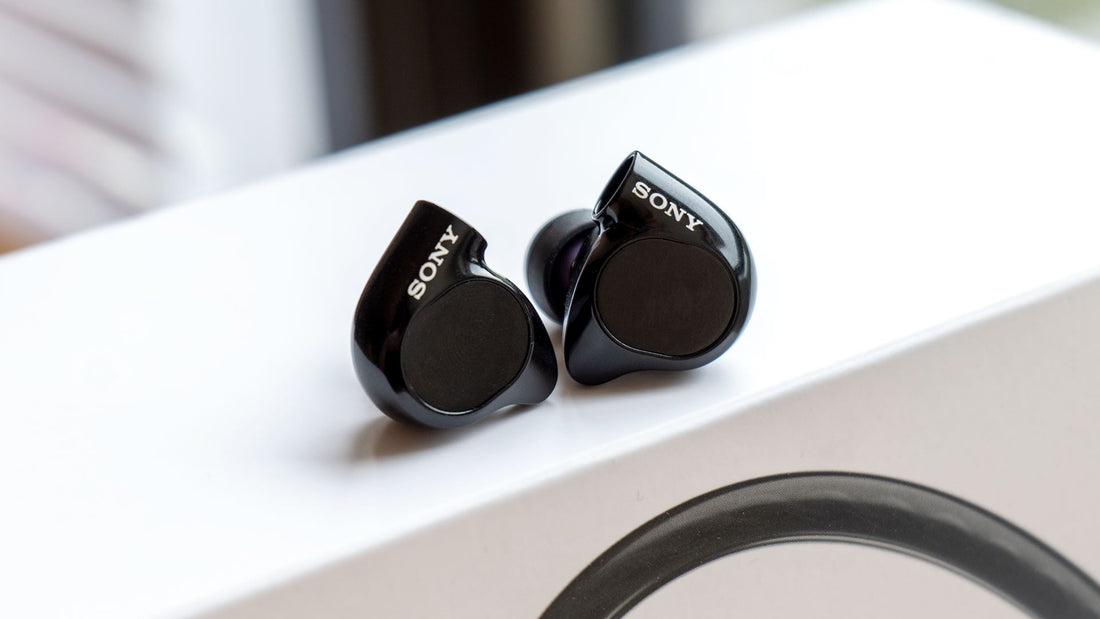
As someone who hasn’t been in the IEM space nearly as long as some people, there are still a lot of old classics that I’ve not had a chance to try. Until recently, Sony’s IER-M7 was one such IEM that I’d always heard about, but never got time with because I wasn’t around when it—or its big brother the IER-M9—were at the height of their popularity.
The Audiosense DT200 was one case where trying a years-old IEM ended up being incredibly rewarding, but it was similar to IER-M7 in that, despite being well-liked on release, it was totally absent in today’s discourse. This should surprise no one; most of us know the IEM hobby moves incredibly fast.
However, the DT200 was a very pleasant surprise for me, so I’ve since had the urge to excavate through offerings of the past to see if there are any other sleeper hits that might be worth giving a second lease on life in our discourse.
And this is what led me to IER-M7, a fully-sealed 4 balanced armature IEM from Sony costing $799. People may have given it its due in the past, but in today’s discourse I think IER-M7 deserves more credit than it’s getting. Why? Let’s talk about it.
What we like
- Warm, inviting midrange tuning
- Incredibly ergonomic shell design
- Amazing unboxing experience and complement of included accessories
What we don’t like
- Fully-sealed design may cause varying levels of discomfort
- Treble gets less controlled with non-stock tips
- Bass presentation lacking in magnitude and subjective impressiveness
Build, Design, Comfort, and Accessories
No two ways about it, the accessories package that comes with the IER-M7 is incredible. In the box we get two cables with 3.5mm TRS and 4.4mm Pentaconn terminations, two sets of different narrow-bore eartips ranging in sizes all the way from Smaller Small (SS) to Larger Large (LL), and a magnetically-closing case containing a microfiber towel and a shirt clip. All of this comes with a presentation that makes for what is probably the best unboxing experience I’ve ever had with an IEM.
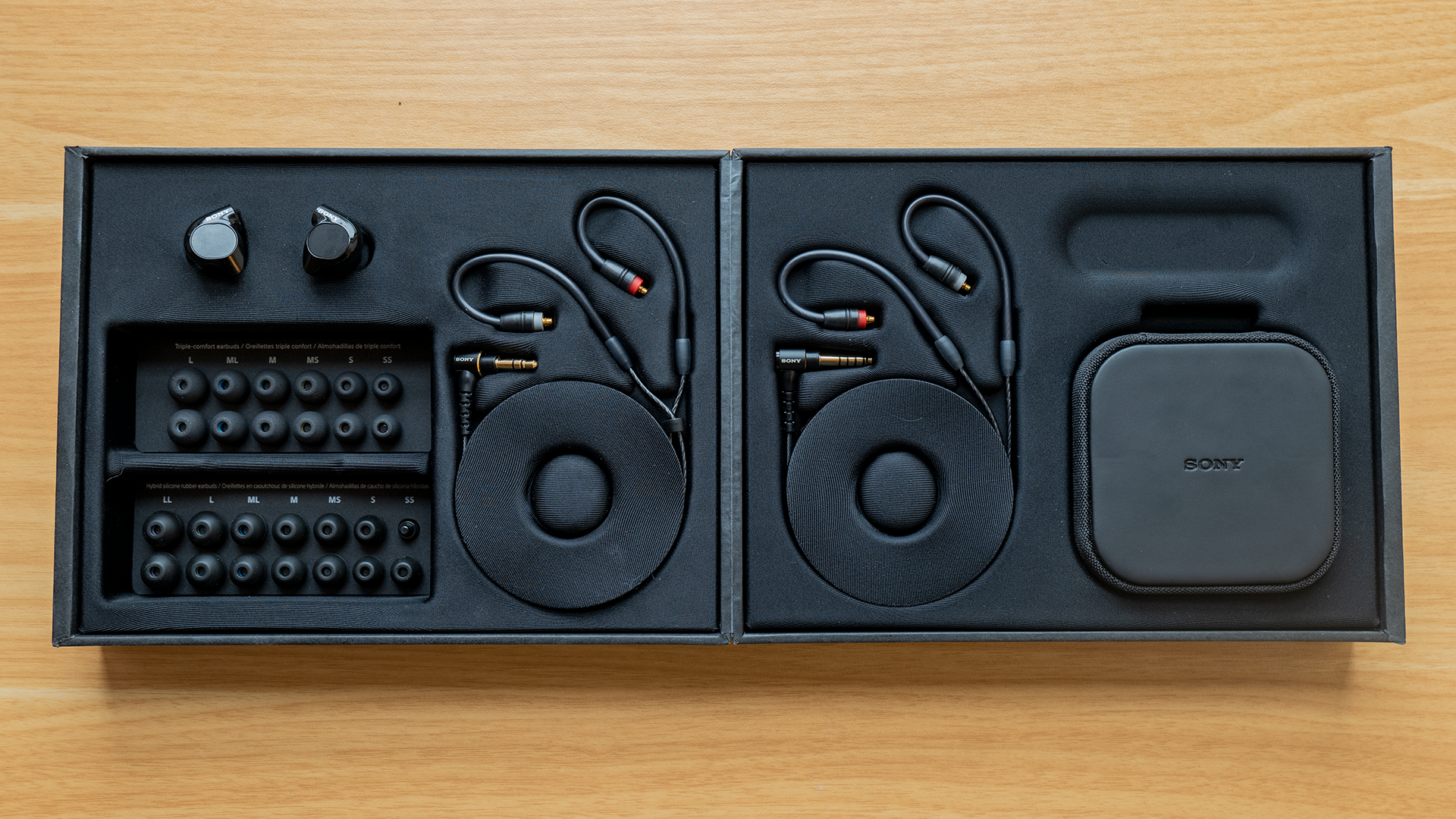
Once the IEM is put on a cable and placed in the ear, the outer ear/ear canal entrance comfort is also very good (for me, at least). The part of the shell that faces the ear is angled in such a way that in nestles—but never forcefully juts—into the natural shape of my concha and rests very naturally. The cable leaves the IEM shell at the proper angle to wrap around the top-front of my ear with no issue, and the cable itself is both skinny and compliant enough for me to be perfectly happy using this cable instead of using an aftermarket one.
The included tips are both narrow bore, which struck me as odd until I tried the sound with wider-bore tips—we’ll talk about that later though. The two included tip types are called “triple-comfort,” which uses a foam-type material for the flange, and “hybrid silicone” which uses a silicone flange. In terms of shape, both tips remind me of Final E tips but with a significantly shorter core.
Final E tips always struck me as a compromise; the fit is incredibly comfortable, but the sound can often be… a bit weird, for lack of a better term, often causing strange resonances in the lower and mid-treble. I think the shorter core of the Sony tips ends up working in their favor, such that they sound a bit less weird but are basically identical comfort-wise. I opted for the hybrid silicone tips because foam tips aren’t my thing, so all sonic impressions are based on the sound with those.
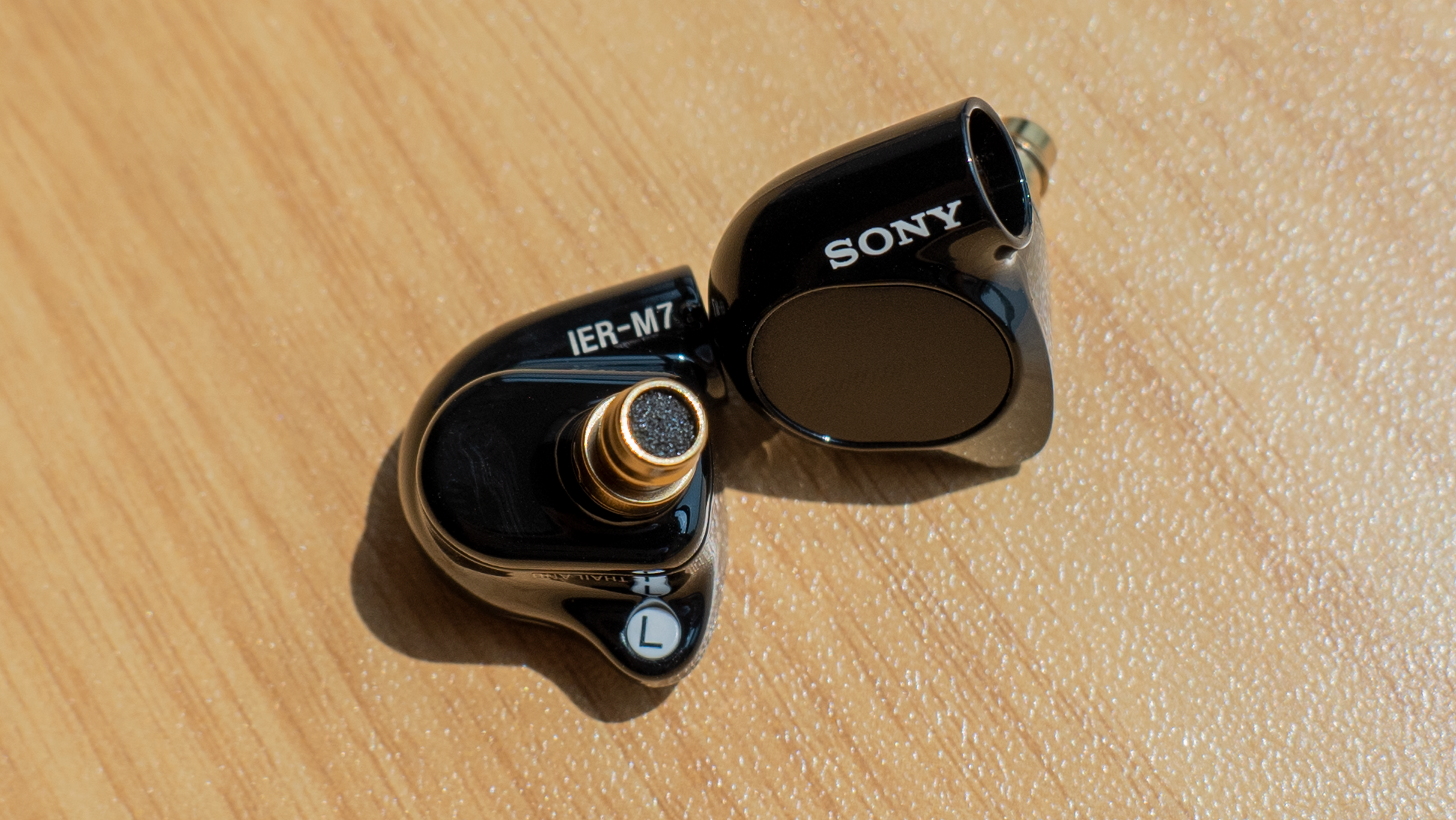
The build of IER-M7 is what I’d call on the reasonable side of compromising between build quality and weight. It uses plastic, which makes it more comfortable and likely less expensive, but the build does feel a bit less robust and expensive than the IER-M9, which if memory serves uses a textured metal shell. However, I actually prefer the compromise chosen by M7, as the comfort is just straight up better than I remember M9 being—specifically because the textured shell of M9 was rather noticeable when in the ear.
A potential big downside with this IEM, and many other IEMs using balanced armatures for bass, is that it's a fully-sealed IEM that has perceptible pressurization of the ear canal, as well as a noticeably distracting occlusion effect. While this is something many people don’t really have issues with, it’s become more of a problem for me as I’ve tried more IEMs and realized that some of them are much better for this quality than others. Unfortunately the seal does make me want to use IER-M7 significantly less than I would if it were vented.
Overall I think IER-M7 mostly accrues wins here, but people should be aware that if the occlusion effect and fully-sealed IEMs usually bother them, IER-M7 should probably be avoided. Otherwise, its design, build, and accessories are all exemplary, and I wish more IEMs were this well-considered.
Frequency Response & Tonality
Zooming out for a second, I think when most people put this in their ears and listen for the first time they’ll first notice the bass… or the lack thereof.
It may not look like it on the measurement above, but since this measurement was taken on a 711 coupler—which has a less human-like acoustic impedance, especially under 100 Hz—balanced armature IEMs will generally have less bass than 711 measurements show when placed in a human ear.
Thus we arrive at my first complaint with the sound of this IEM: there’s not quite enough bass for the overall signature here. Kick drums feel a little too lightweight and their bloom and bark in the higher registers isn’t balanced by enough decay in the fundamentals. Bass guitars are tilted just a bit too much towards their first few overtones, sounding a bit hollow and lacking in decisive power.
I’m not a basshead by any means (in fact I actually think I prefer less bass than most listeners) but this is still a bit light in the bass even for me, and I think this deficit is exacerbated slightly by the fact that there’s an elevation in the upper bass and lower midrange, causing this deficit in sub-bass and mid-bass to be more noticeable on the instruments that actually have content down there.

Speaking of which, this lower-midrange elevation may be divisive for people who find the extra low-midrange bloom of the HD 650 to be a bad thing. Personally I find this 200 Hz elevation on IER-M7 to be welcome, as it makes up for the missing decay in the bass proper and helps balance the rest of the frequency response—specifically the treble. I would also say that, at least to me, it doesn’t really sound all that elevated anyway.
Maybe I’m just used to the HD 650 (which is one of two headphones I actually elect to use in my free time) but this elevation, along with the downright exceptional center and upper midrange tuning, all in all makes for a very coherent and unproblematic listen for basically any of the music I’ve listened to that doesn’t rely on prominent bass. Guitars, voices, pianos, horns, wind instruments and synthesizers all sound about as close to ideal as any IEM I’ve heard, with their fundamentals and overtones in a well-balanced equilibrium with no one region dominating the other.
If I had to nitpick one area, it would be that the “ear gain” peak in the upper midrange being shifted to 3400 Hz causes the timbre to be a bit on the gritty side. If the peak is reduced, or shifted with EQ to be around 2700 Hz instead, this effect of grittiness is significantly—but not totally—abated. I don’t really hear the slight recession around 2700 Hz as a massive impediment or coloration, though.
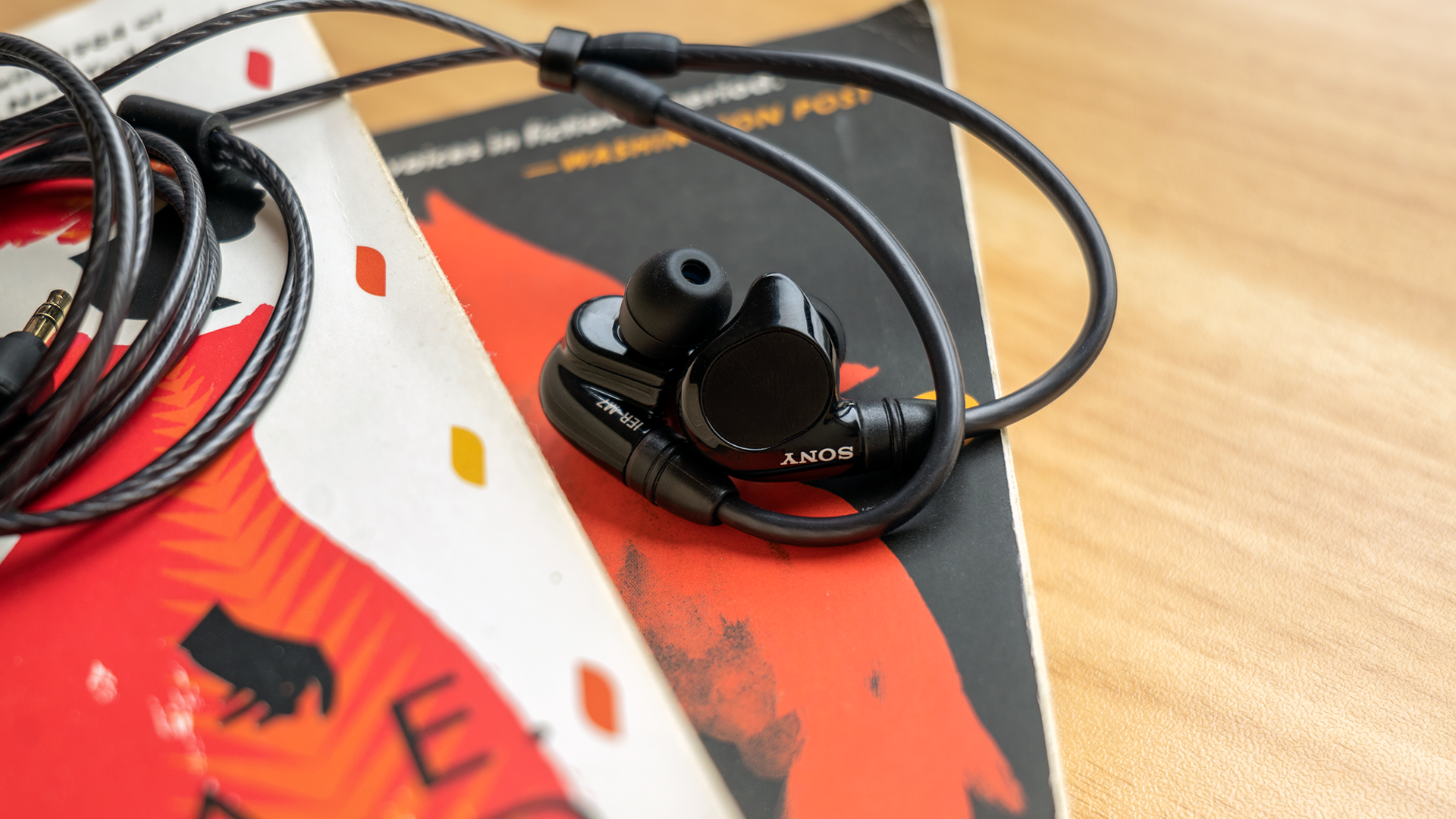
Moving up into the treble proper, this is where experiences will really start to vary, so definitely take this with as many grains of salt as you want. Before talking about the treble though, I want to mention that I actually liked IER-M7 a lot less with my usual tip choice of Divinus Velvet wide-bore tips. With these tips, the upper treble in particular became an issue that almost ruined this IEM for me. Only with the included short-core, narrow-bore Hybrid Silicone tips did I find this IEM’s treble palatable, so I definitely advise listeners to test both of the included tips as well as a variety of their own tips, because they absolutely make a difference.
The upper-midrange to lower treble transition area (between 4-6 kHz) is handled fairly well on this IEM, being right around where I usually prefer it & not committing any extra glare or scratchiness to the presentation of vocals, guitars, or snare drums. If I had to nitpick I’d say it might still be 1 dB forward here for my taste on some things, but that could also be due to the upper midrange below it not quite being perfect—the mild 2700 Hz recession is likely causing the area above it to be a bit more noticeable than it would be otherwise.
I personally found the upper treble to be a bit too forward, even with the tips that ended up working for me. IER-M7 has a bit of extra sparkle around 11-12 kHz in my ear that compounds with the slight grittiness from the 3400 Hz peak, and I think is ultimately responsible for what many in the past may have called “BA Timbre.” This elevation definitely ended up coloring hi-hats and ride cymbals in particular, while also committing a breathy wispiness to the upper end of certain vocal recordings.
The forward upper treble, in concert with the lacking bass magnitude, tilts the otherwise “warm” response to be closer to what I would call “a bit bright.” Other people who may be less sensitive to upper treble might find it tilts the response closer to “neutral,” or doesn’t even tilt it at all. Such is the nature of treble: the area of frequency response most prone to large deviations between listeners.
Overall, I think the tone of this IEM is exceptional barring one or two caveats. Rarely was any of the music I listened to ruined in the way other (often much more expensive) sets have ruined it, so it’s hard for me to be upset at all with the few compromises IER-M7 has, especially because one or both of them might just end up being an issue for me and not for others.

Subjective Impression
IER-M7 has the kind of “soundstage” I’d expect from an IEM with proper midrange tonality. So not excessively blown out in terms of perceived distance, and on the smaller side vs. headphones, but not at all unreasonable. I think the occlusion effect and slight discomfort inherent to being a fully-sealed IEM might be negatively impacting “soundstage” somewhat, causing me to subjectively perceive the elements as being smaller and more “in my head.” I don’t think anyone shopping for an IEM with realistic expectations for how spacious they generally are will be disappointed with IER-M7’s sense of soundstage, though.
Dynamically I feel IER-M7 lacks a bit, but interestingly not as much as I felt the IER-M9 lacked. The latter, if memory serves, had quite a bit more upper treble which caused transients to feel excessively thin and weightless, despite the fact that IER-M9 also had a bit more warmth and bass. I would say IER-M7 is on the “clappier” side of dynamics and transients as opposed to the “monolithic and explosive” side, the former generally being where I find most IEMs to sit. I’d prefer the latter, but I wouldn’t say that IER-M7 totally lacks tonal density or note weight either. It's just a little too quick, small, and lightweight to be a heavy hitter for dynamics.
In terms of what audiophiles often call “detail,” I think it will largely depend on the midrange and treble sensitivities of the listener. For example, if someone is more used to an IEM with much more forward upper midrange and treble—like a Moondrop Variations—they will likely find IER-M7 to be “less detailed” given its much more balanced tonality calling equal attention to most elements of the music, instead of unnaturally highlighting the subjectively “smaller” upper midrange and treble cues.
That said, I do think people looking for exceptional performance in detail, dynamics, or soundstage will likely not be incredibly pleased with IER-M7. It just isn’t really tuned to unearth any of the microscopic nuances, embiggen the dynamic punch, or engender a sense of overtly noticeable distance in music… but that’s because it’s actually tuned to sound normal for the most part.
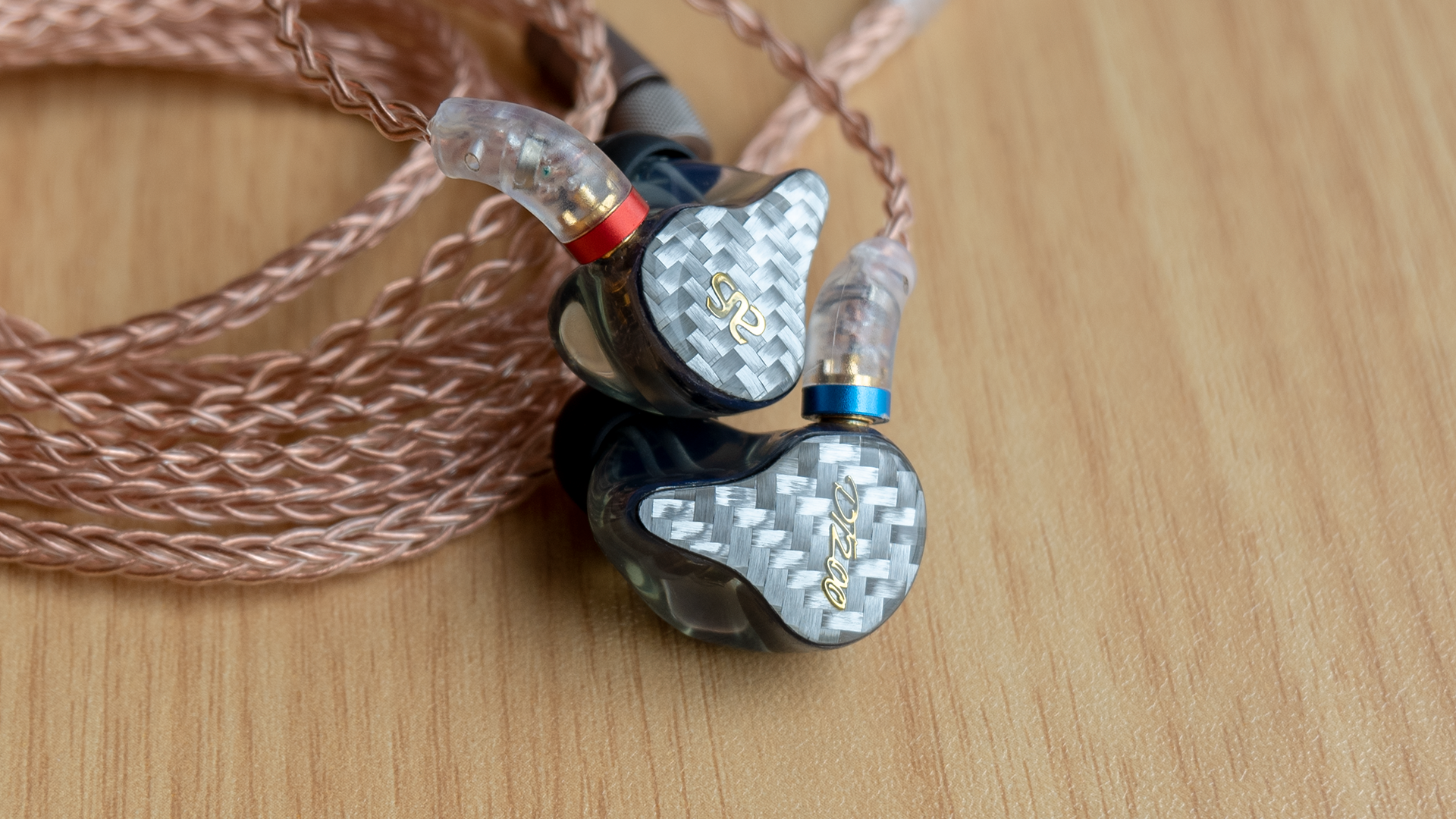
Sony IER-M7 vs. Audiosense DT200
This is an interesting comparison as I feel these two are actually tuned rather similarly and use similar design principles—both are fully-BA sets which require a full seal, are very ergonomic, and sport a similar tuning.
The IER-M7 strikes me as a straightforward upgrade to the DT200 in basically every way possible. In terms of build, accessories, comfort, and design it’s a clear upgrade, as every element mentioned looks and feels more appropriate for an $800 IEM.
In terms of sound as well, I find the IER-M7 to fix most of my major gripes with the DT200. It lessens the slightly over-warmed presentation and reins in the wooliness in the lower midrange to bring back some of the sense of clarity and transient snappiness. IER-M7 also seems to have a more reserved lower treble and—in my ear at least—a more palatable upper treble elevation
I think the DT200’s warmer presentation is more likely to be heard as spacious or having distance than the IER-M7’s slightly more neutral presentation, but overall these IEMs present most of their subjective qualities rather similarly, save for the M7 being a less soft and more direct and "dynamic" presentation.
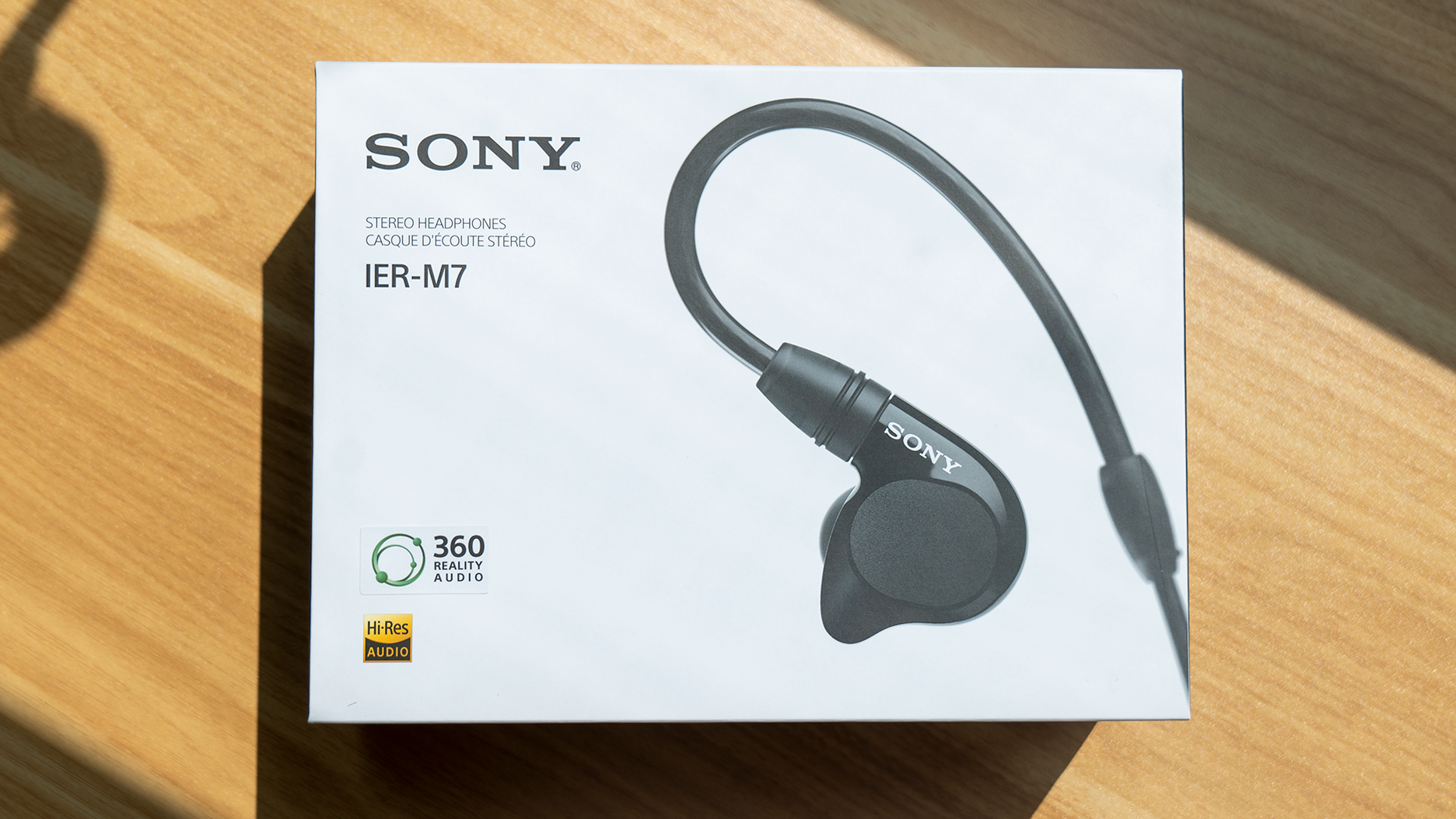
Conclusion
The IER-M9 is one of the most universally-loved IEMs out there, and it was often ranked in flagship tiers, while being a fraction of flagship price. The IER-M7 being less expensive and arguably better depending on taste makes me a little confused why it didn’t get shown quite as much love, but I think our community’s new method of analysis based on the 5128 and population average HRTFs means the IER-M7 might finally get its due.
But the question still stands: is it worth the $799 you’d pay to get it?
To me it’s not the simplest question to answer, as it depends on what you value. If you really want an incredible overall package—including the top tier accessories and shell comfort—with an eminently reasonable tuning and few glaring downsides, I’m genuinely not sure if there’s another IEM that offers that at a lower price.
Most of the IEMs that have a similarly balanced midrange tuning are either pretty scarce when it comes to included accessories, pretty poor ergonomically (with massive shells being the typical problem), or generally have much more bass and treble such that the benefits of the midrange tuning are overshadowed.
While yes, $799 is a lot of money for an IEM, it’s not at all unreasonable for what you get if what you want is a killer midrange and accessories galore, and I'd be happy to recommend it to that kind of customer barring two potential dealbreakers.
The main dealbreakers beyond price are going to be the fact that it’s fully-sealed, and that it probably doesn’t have the bass level that most IEM enthusiasts are going to want. So be aware: if you want big or even just somewhat prominent bass, I’d say IER-M7 is safe to skip.
But if you prioritize natural midrange, shell comfort, and a premium package above all else, I’m not sure where else you can get an IEM that does those things quite as well for less money. So if you’re like me, and that sounds like something you’d be into, maybe it's worth taking a chance on IER-M7.
If you have any questions or want to chat about this article, feel free to start a discussion below on our forum, or ping me in our Discord channel, both places where you can find me and a bunch of other headphone and IEM enthusiasts hanging out and talking about stuff like this. Thanks so much for reading. Until next time!
